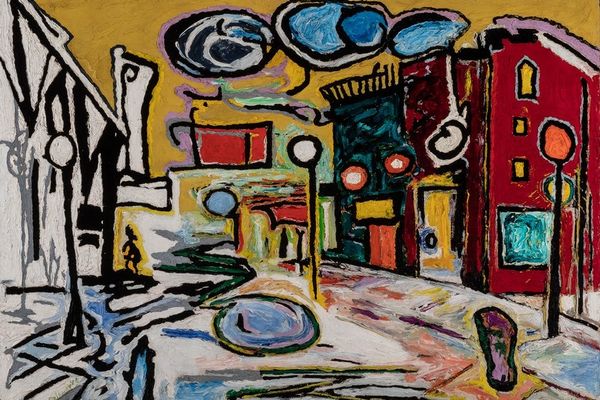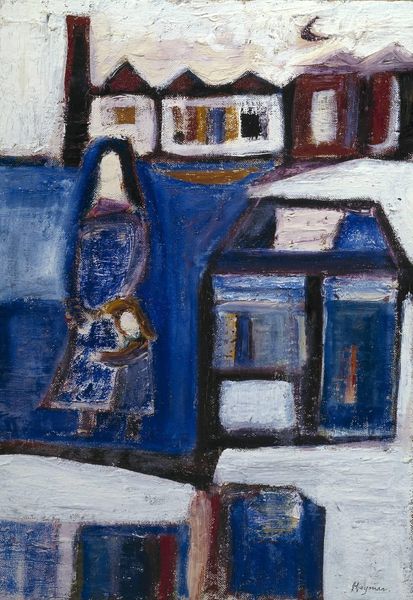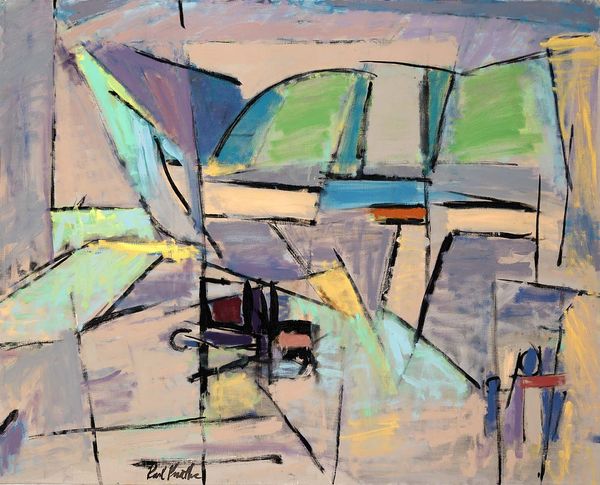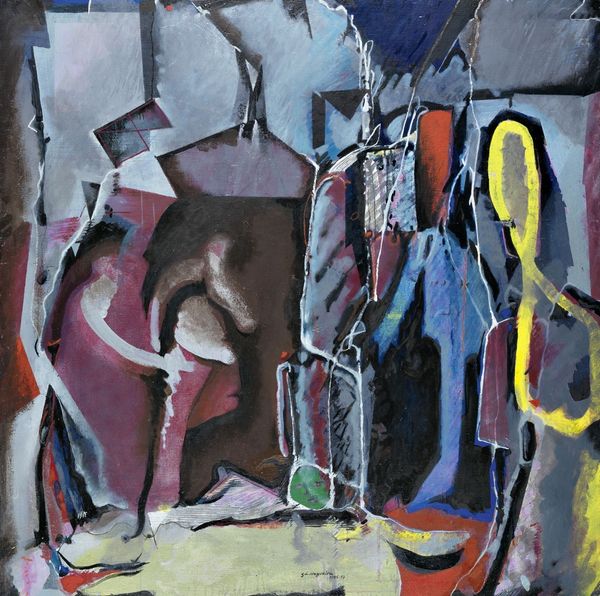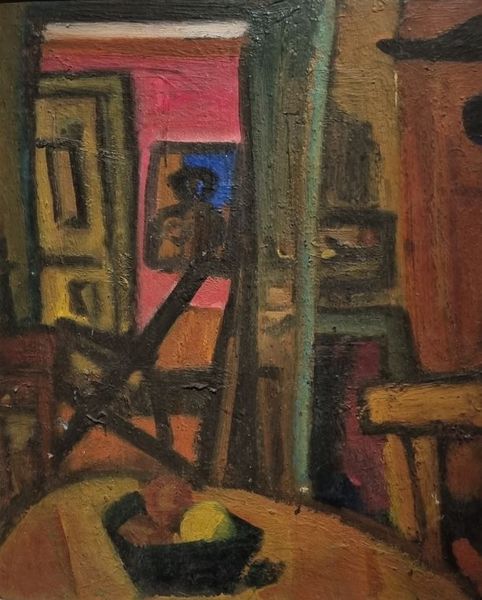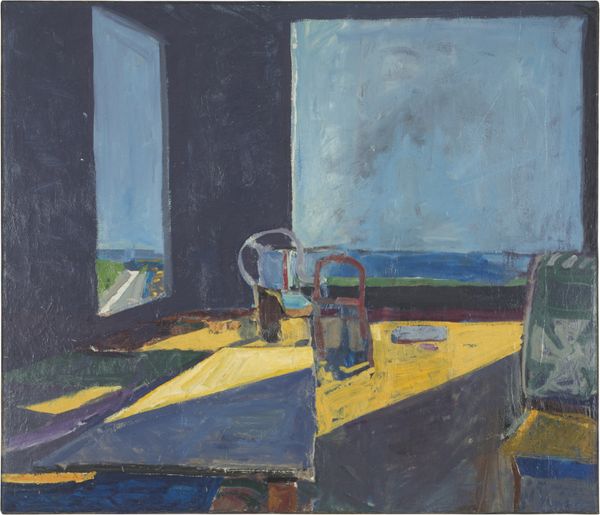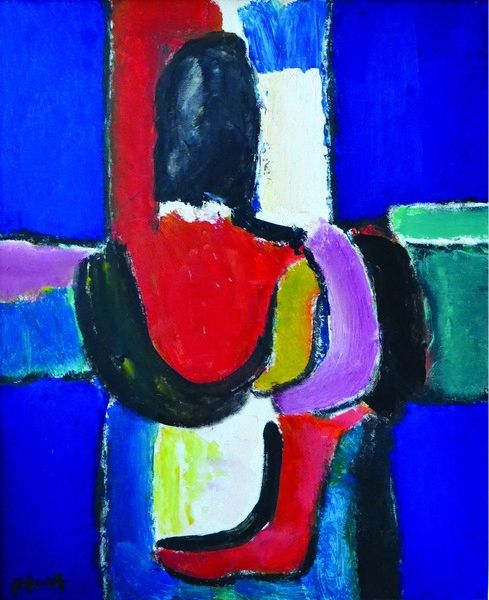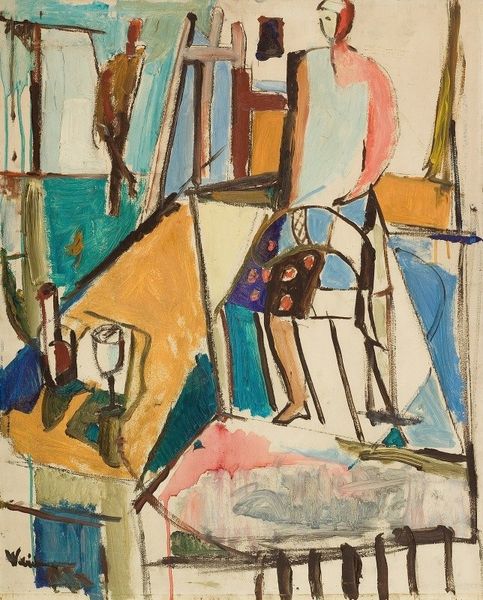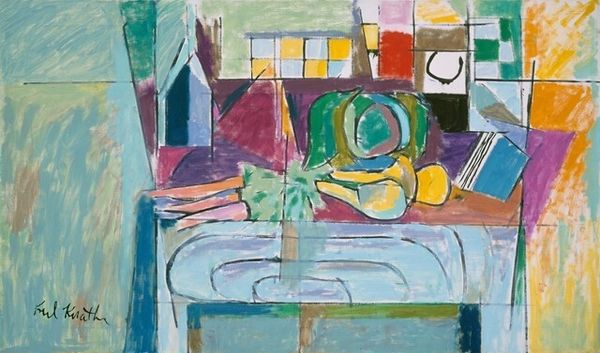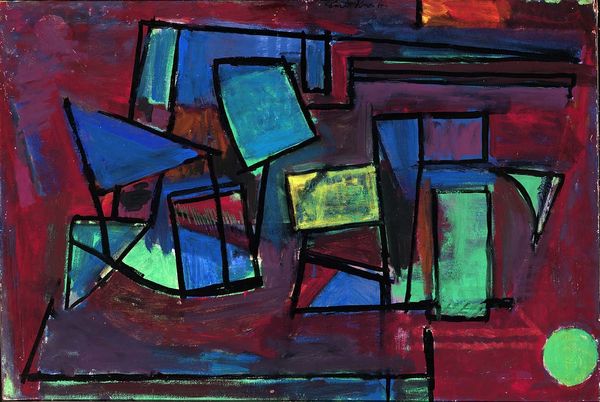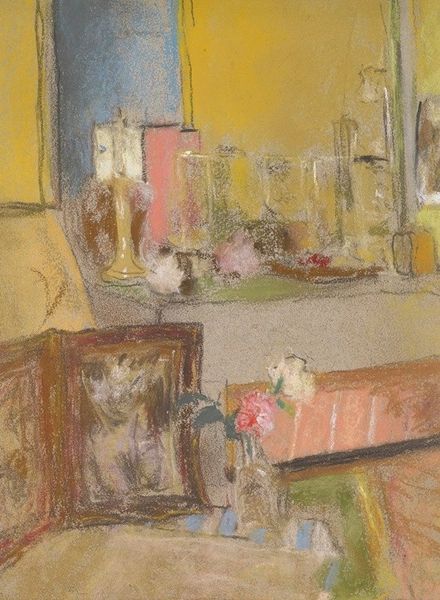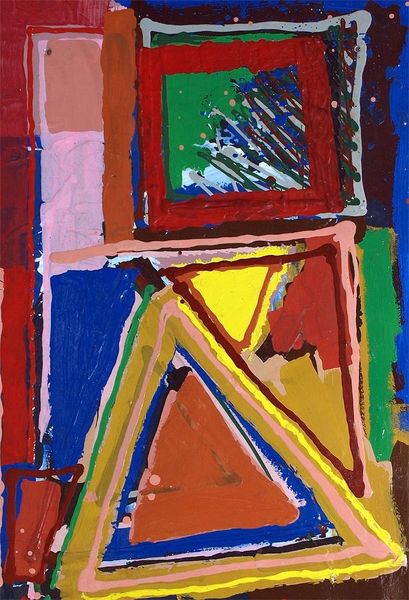
Copyright: Tove Jansson,Fair Use
Curator: Welcome. Today we’re looking at "Interior," a 1951 oil painting by the Finnish artist Tove Jansson. Editor: My first thought? Slightly unsettling! It’s like peeking into someone's memory of a room, but everything feels… off-kilter, not quite resolved. Curator: It’s a powerful example of Jansson’s experimentation with expressionism, especially her engagement with color theory and spatial distortion after the Second World War. There is a notable lack of representational accuracy. It evokes anxiety. The fractured perspective creates a disjointed atmosphere. Editor: Yes, the fractured perspective hits me! Those intense blocks of color feel like emotional fragments. Red shouts. The blues ache. Curator: The architectural space isn't a straightforward depiction of reality but appears to embody a state of mind, or perhaps embody what has been erased from our consciousness as humans who seek definition of reality. The positioning of the solitary chair can evoke questions related to absence, loneliness, waiting. Its odd positioning amplifies the sense of unease. How does the object function as a symbol? Is it related to absence or anticipation of someone present or someone absent? Editor: Exactly! It’s waiting. And those arches... I feel this profound architectural sense that’s also spiritual. But the painting doesn’t resolve, it withholds... it keeps me in suspense. Curator: It is interesting to explore Tove Jansson’s background and gender when interpreting this work, recognizing that as a female artist working in the mid-20th century, she had a unique perspective. Considering Jansson’s wider body of work, specifically her celebrated Moomin stories, offers an additional dimension to the themes that can be uncovered in "Interior." Does the work challenge societal norms, expressing isolation or seeking a sanctuary through art? What are we left to contemplate when examining her intersectional identity through the painting? Editor: Knowing a bit about Tove’s other work, her fantastical Moomin universe, does shift how I see this! It’s like the shadowy flip-side to her whimsical stories, where the safety of home is fractured and vulnerable. It also makes the spiritual aura and potential seeking that you mentioned even more palpable. It’s about a feeling rather than an absolute image. Curator: Understanding the work within its art historical and biographical contexts enriches its interpretation. The visual distortions mirror that cultural moment, the shifting realities. It asks the viewers to confront not only what they see but the assumptions they hold about gender, domesticity, and perception. Editor: It’s heavy. Yet there's a strange beauty, like finding a stark truth.
Comments
No comments
Be the first to comment and join the conversation on the ultimate creative platform.
